“He was my bridge to Oxford and beyond”: Kevin Crossley-Holland and Bruce Mitchell
24 Oct 2022|James Howarth
- Library, Arts & Archives
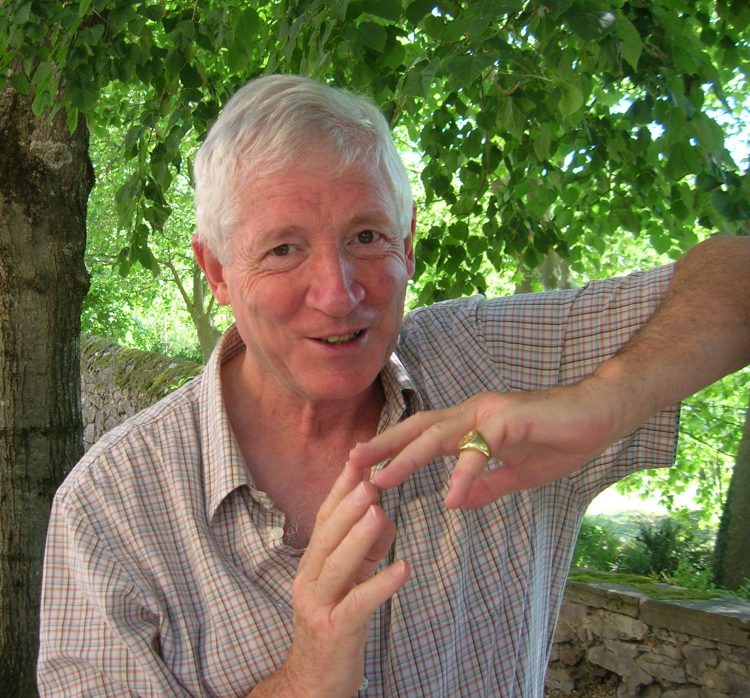
This term’s exhibition in the Old Library explores the work of Kevin Crossley-Holland (Honorary Fellow and 1959, English), prize-winning children’s author, translator, poet, librettist, editor and professor. Kevin engages creatively with language and poetry, place, history and legend. He captivates us by telling stories deeply rooted in past cultures, which he remakes to be compellingly contemporary and relevant. For the exhibition, Kevin has generously loaned items from his private collection to add to material from St Edmund Hall’s Archives and Special Collections.
Early in his career, Kevin established himself as a poet and as a translator and re-teller of Old and Middle English poetry, romance, and folklore for all ages. However, his relationship with Old English got off to a rocky start as one of our exhibits explores:
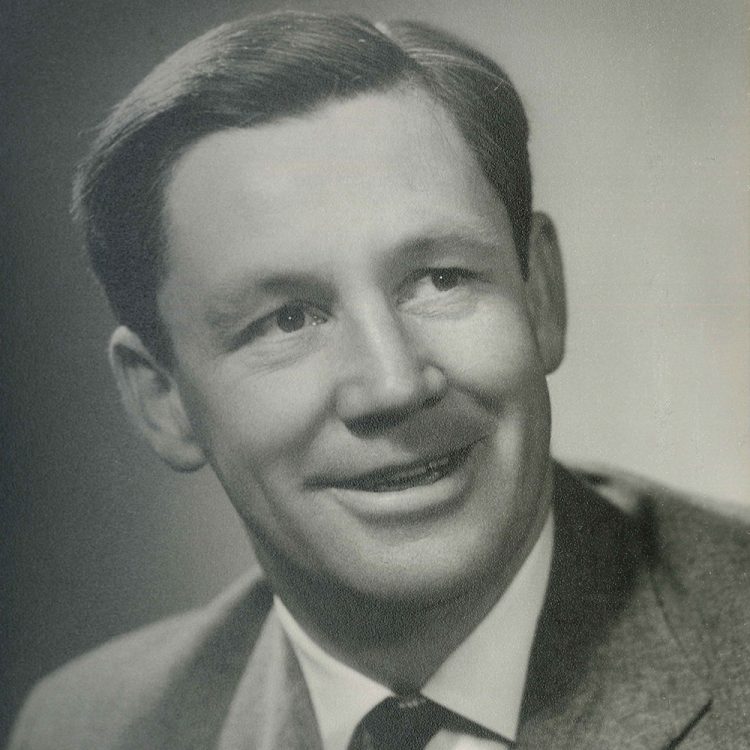
Bruce Mitchell was a beloved English Fellow and Tutor at St Edmund Hall for over 30 years, from 1955 to 1987. An internationally reputed scholar of Old English Language and Literature, his Guide to Old English has been for many years the main textbook on the subject for undergraduates.
Born in Queensland in 1920, he came to Oxford to study for a DPhil under the supervision of JRR Tolkien at Merton. Tolkien enthusiastically recommended Bruce for a post at Teddy Hall, despite his reference opening: “Although he is an Australian…”
In a tribute to Bruce published in the Hall Magazine in 2014, Kevin called him “the teacher who not only influenced me but changed my life.”
A swan, a pork pie & the glorious pulse of Anglo-Saxon Poetry:
Kevin describes how he was the only English student in his year to fail the Preliminary examination in Old English, at which point Bruce stepped in: “[He] devised a three-part strategy. First, a thoroughly uncomfortable meeting with the assembled Fellows, ending with the Principal’s velvet threat: “We’d be thorry to loothe you, Mithter Crothley-Holland.” I slunk out, feeling I was in danger of letting down the team. Second, Bruce invited me to play weekly squash and tennis, and to drink dry sherry with him. Third, he gave me extra coaching. Thus we entered into an unspoken contract.”
There then followed an unfortunate encounter with a swan:
“Fate goes ever as it must! I was sitting in a stationary punt on the River Cherwell, fortified by a pork pie, listening to my father’s music on the transistor radio and studying Sweet’s Anglo-Saxon Primer, when a swan came floating towards me. After turning up its beak at the pie, it flew into a rage when it heard the music and saw the grammar. Aware of Leda’s fate, I tried to jump on to the bank, wrecked my right knee, and spent a week in the children’s ward of the Radcliffe – the only one in which there was a spare bed – “there Aelfric and Old English verbs to con”, as a samizdat verse later had it. “The victim of a music-hating swan.”
But during those painful days so long before hydroscopic surgery, something wonderful happened. The glorious pulse and music of Anglo-Saxon poetry, sometimes gruff, sometimes lyrical, invaded my nervous system. And there and then, while around me little children slept, I began to translate a few of the charming metaphorical riddles.”
After he had successfully passed the exam at the second attempt, Kevin showed Bruce his draft translations of some Old English Riddles. This began a collaboration and lasting friendship with Bruce and his wife Mollie which resulted in several volumes of translation including The Battle of Maldon and Other Old English Poems (1965) ) and Beowulf (1968).
Bruce’s own copies of these book feature in our exhibition alongside early printings of Old English from the historic collections of the Old Library and Kevin’s Translations.
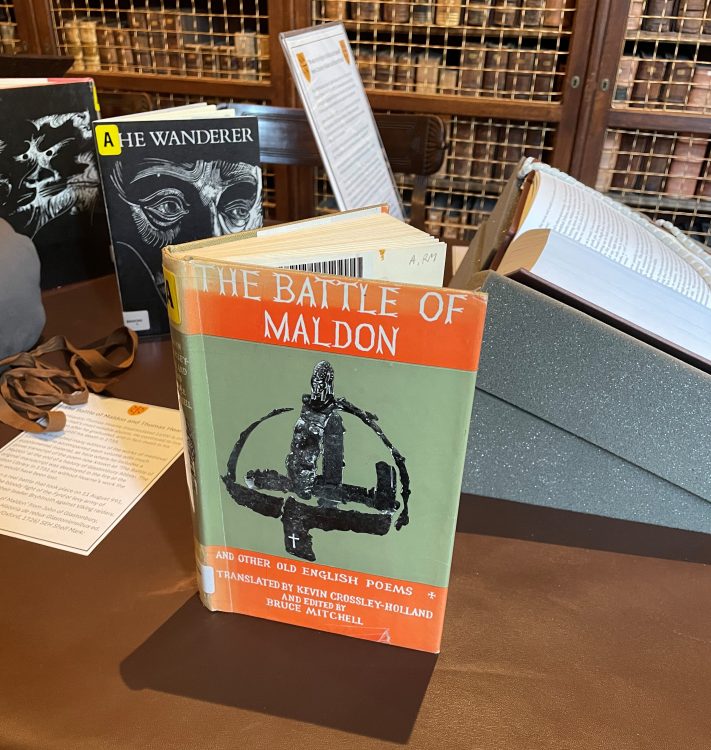
1. The Battle of Maldon and Thomas Hearne
The antiquary Thomas Hearne (matriculated 1695) is one of Teddy Hall’s most notable alumni. He continued to live in Hall even after he graduated, and in fact dwelt in his rooms here until his death in 1735.
Hearne published many editions of the works of medieval historians, and he accompanied each volume with much supplemental material. For example, he includes a prose transcript of the poem now known as The Battle of Maldon at the end of a history of Glastonbury Abbey. The original manuscript was destroyed in the fire at the Cotton Library in 1731 so without Hearne’s work the poem would have been lost. Based on a real battle that took place on 11 August 991, it tells of the bloody fight of the Fyrd or levy army of Essex under their leader Bryhtnoth against Viking raiders.
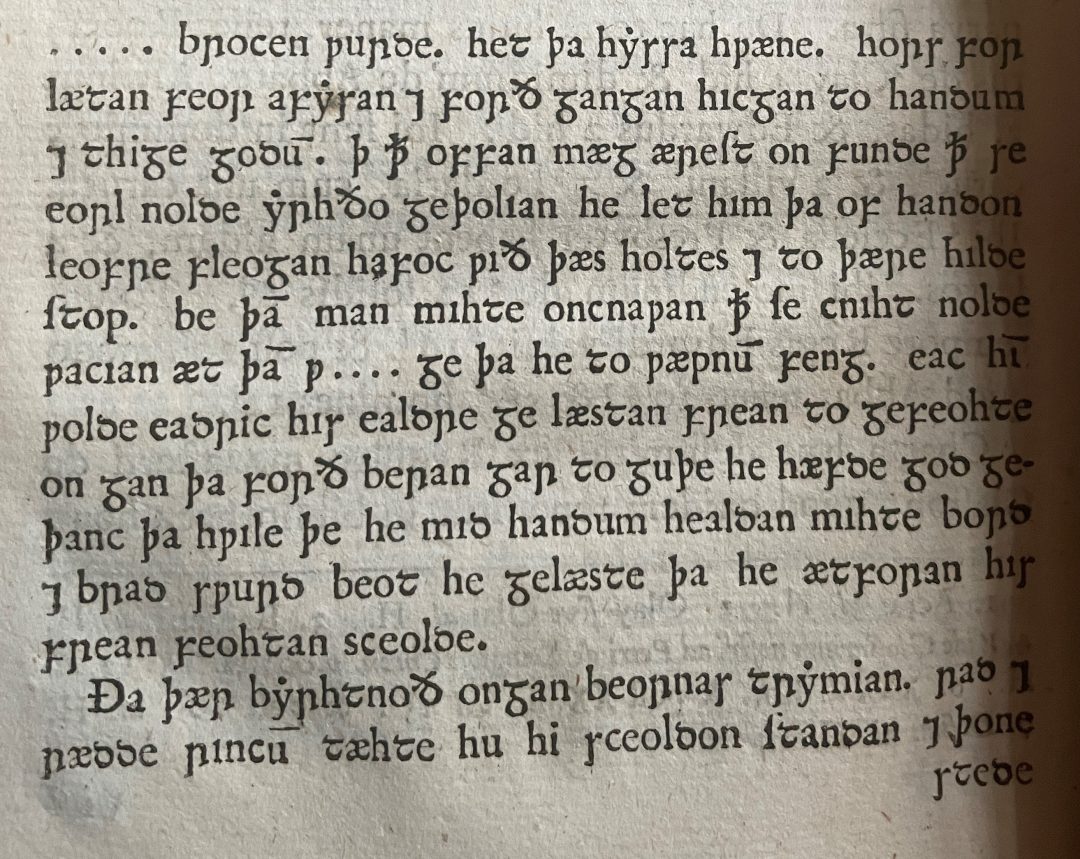
The Byrhtnoth began to marshal his men.
He rode about and advised, he told his men
how they should stand firm, not yielding an inch,
he bade them grasp their shields in their hands
tightly and upright, and not be afraid.
After he had urged on his army to the utmost,
he dismounted with his escort at a carefully chosen place
where he knew his most faithful men were waiting.
Then a Viking spokesman stood on the river bank
and bellowed a message from the seafarers
to Byrhtnoth, the earl, on the opposite bank.
2. The earliest poem in English?
George Hickes’ monumental Linguarum vett. septentrionalium thesaurus grammatico-criticus et archæologicus (London, 1703-5) was first conceived of as a second edition of his earlier Institutiones grammaticæ Anglo-Saxonicæ, et Moeso-Gothicæ. However, it grew into a massive, lavishly illustrated work in seven parts surveying the grammar and history of English and other northern Germanic languages as well as examining Anglo-Saxon law, poetry, charters and even numismatics. Hickes worked with a large number of collaborators, some of whose contributions are effectively complete works of their own.
The first volume includes a pioneering chapter on Anglo-Saxon poetics and includes Caedmon’s Hymn, often claimed to be the earliest poem composed in English. Caedmon, in the account of the Venerable Bede, was an illiterate peasant divinely inspired to give a song of praise.
Now we must praise the Guardian of Heaven,
the might of the Lord and His purpose of mind,
The work of the Glorious Father; for He,
God Eternal, established each wonder,
He, Holy Creator, first fashioned,
heaven as a roof for the suns of men.
Then the Guardian of Mankind adorned this middle-earth below,
the world for men,
Everlasting Lord, Almighty King.
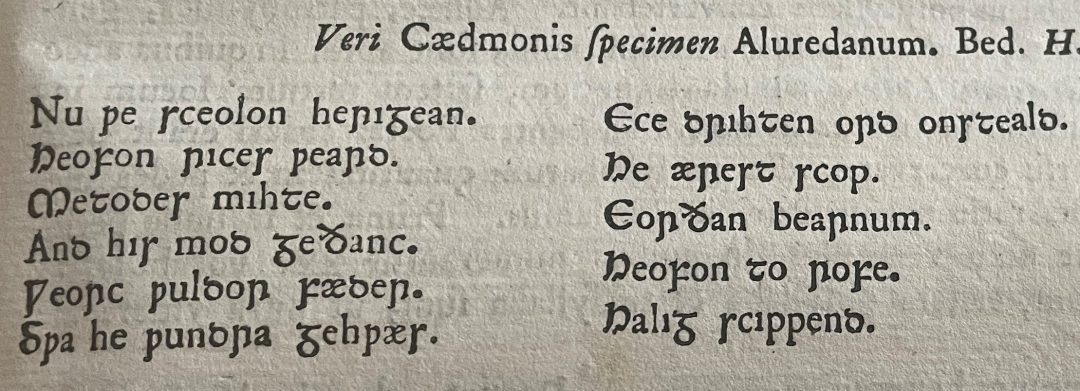
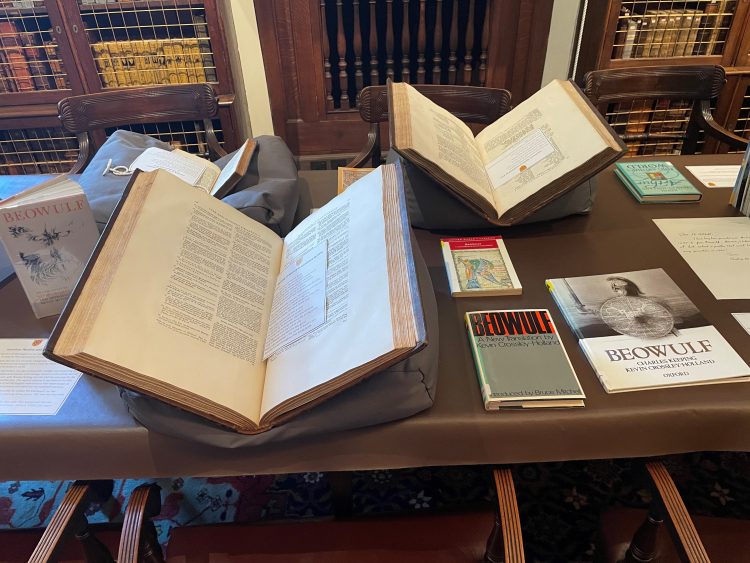
3. Humfrey Wanley and Beowulf
Beowulf is the great surviving epic of Old English verse, telling the story of a hero and his fights against a series of monsters. It owes its first appearance in print to an alumnus of Teddy Hall.
Humfrey Wanley (1672-1726) was the son of a Coventry clergyman. He was initially apprenticed to a linen draper, but having taught himself Old English from a copy he made of George Hickes’ Institutiones grammaticæ, he came to Oxford in 1695.
He was briefly resident at St Edmund Hall (matriculated 1695) before moving to University College and becoming an assistant at the Bodleian Library. He collaborated closely with George Hickes on the whole text of his Thesaurus. Subsequently the two fell out, with Wanley feeling that the £60 he was paid for his work on the Thesaurus did not reflect his contribution. The second volume is ascribed on its title page to solely to Wanley. It forms a catalogue of all Old English manuscripts that were known at the time and remained the most comprehensive account until well into the twentieth century.
The copy of the catalogue on display in the exhibition is open on the entry for Digitised version of Cotton MS Vitellius A. xv on the British Library website, the manuscript which contains Beowulf and includes the opening of the poem. This was the first time that any of the text of Beowulf was printed.
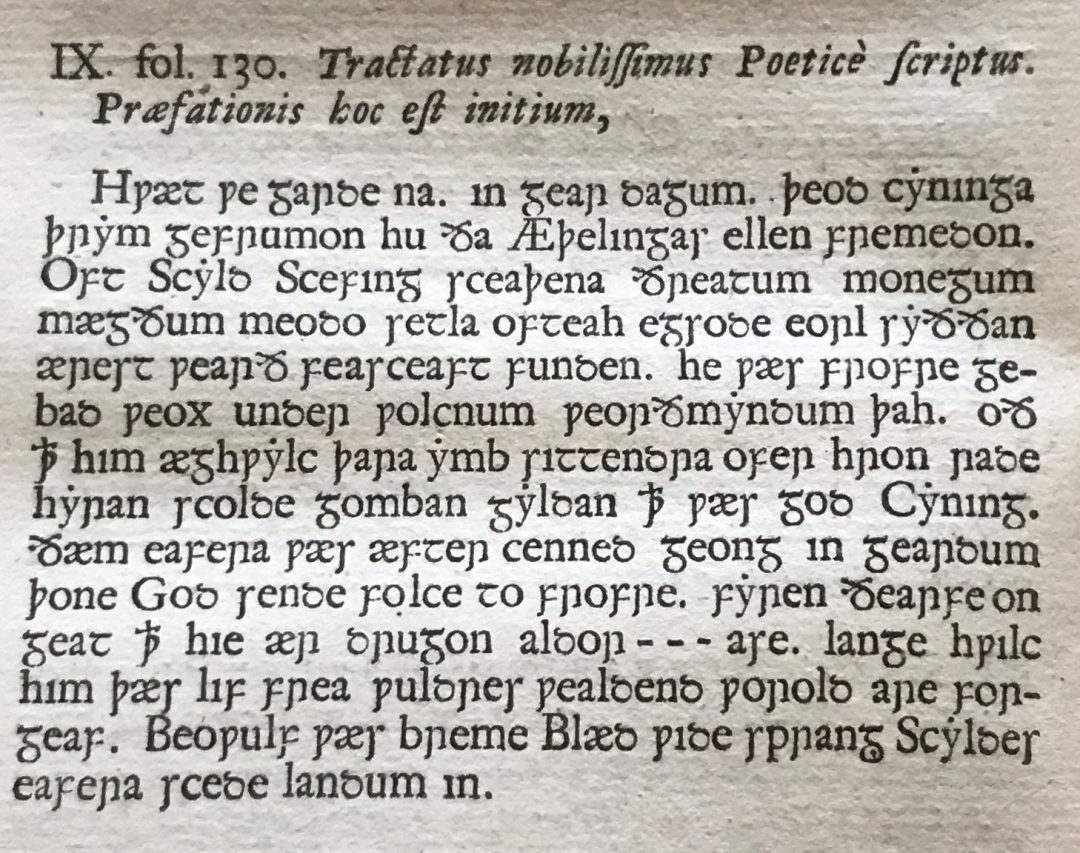
Listen!
The fame of Danish Kings
in days gone by, the daring feats
worked by those heroes are well known to us.
Scyld Scefing often deprived his enemies,
many tribes of men, of their mead-benches.
he terrified his foes; yet he, as a boy,
had been found a waif; fate made amends for that.
He prospered under heaven, won praise and honour,
until the men of evert neighbouring tribe,
across the whale’s way, were obliged to obey him
and pay him tribute. He was a noble king!
Then a son was born to him, a child
in the court, sent by God to comfort
the Danes; for he had seen their dire distress,
that once they suffered hardship for a long while,
lacking a lord; and the Lord of Life,
King of Heaven, granted this boy glory;
Beow was renowned – the name of Scyld’s son
became known throughout the Norse lands.
4. Beowulf goes scuba-diving
Bruce was renowned for his sense of humour. He was said to have been very disappointed to discover he was not the inspiration for the ‘Bruces’ Monty Python sketch, which was not written by is former pupil Terry Jones (1961, English) but by Eric Idle. Another of his pupils, the sculptor Rodney Munday (1967, English), sent him a drawing which resolves a textual crux in Beowulf.
Rodney also created the statue of St Edmund which sits in the graveyard of St Peter-in-the-East, now the College Library.
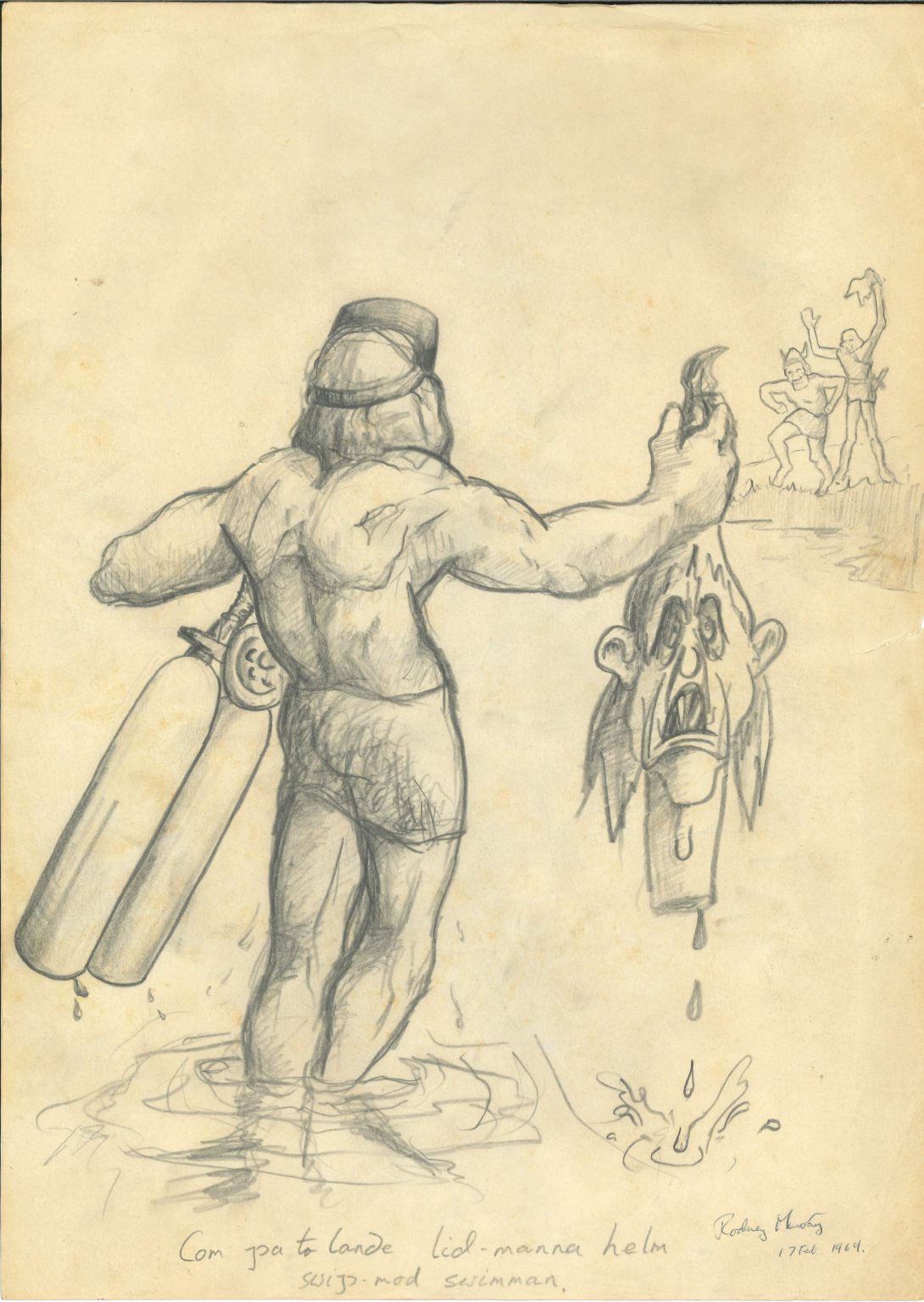
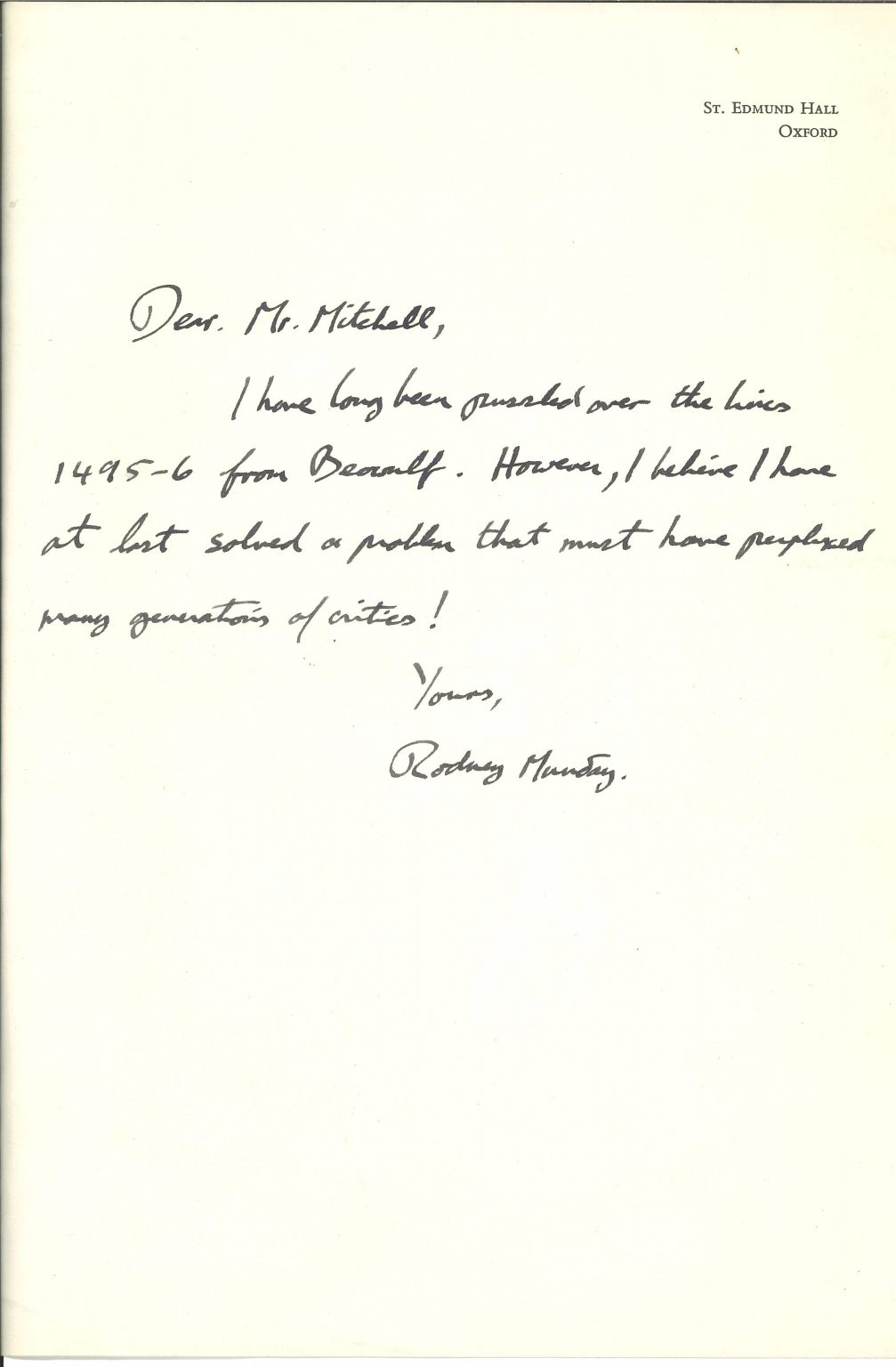
‘Poem, Story, and Scape in the work of Kevin Crossley Holland’: An exhibition in the Old Library of St Edmund Hall runs throughout October. It will be open to the public on 24 and 28 October .10am-4pm. Other visits by arrangement with the Library: library@seh.ox.ac.uk
The exhibition is based on and inspired by ‘Poem, Story & Scape in the Work of Kevin Crossley-Holland’ which ran at the Stanley and Audrey Burton Gallery at the University of Leeds from 29 March—20 August 2022, curated by Dr Catherine Batt, Senior Lecturer in Medieval Literature at the University of Leeds. Many thanks to Sarah Prescott and the University of Leeds for their generous help and support in staging this version.
Category: Library, Arts & Archives
Author

James
Howarth
James has been St Edmund Hall’s Librarian since May 2018. He is responsible for maintaining and developing the library’s collections – including the historic and special collections that are housed in the seventeenth-century Old Library and is keen to promote their use in research, study and outreach.